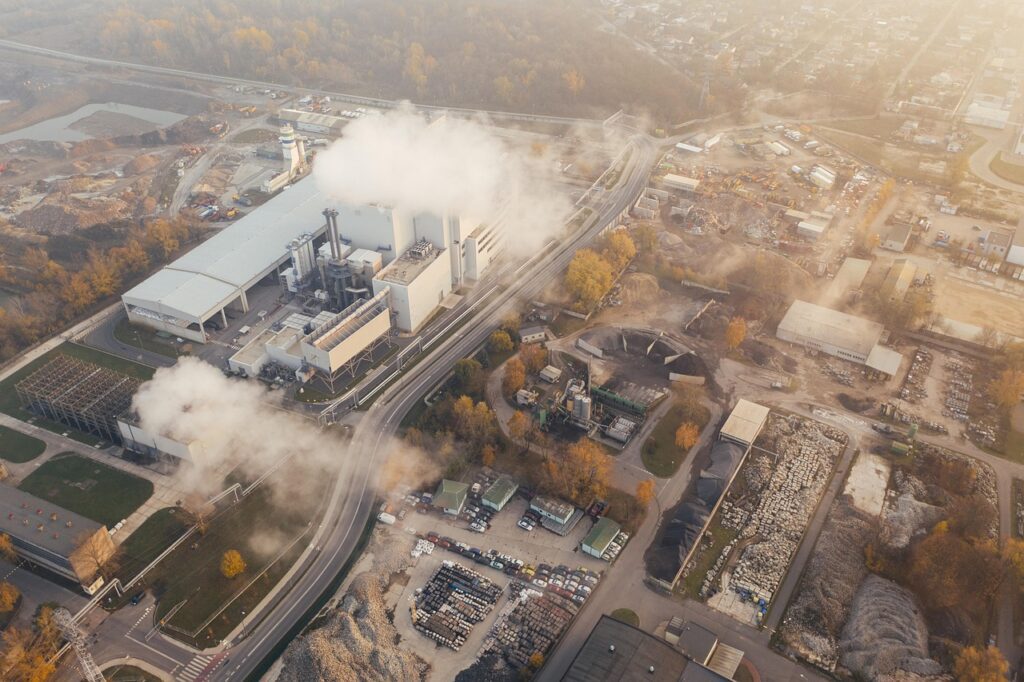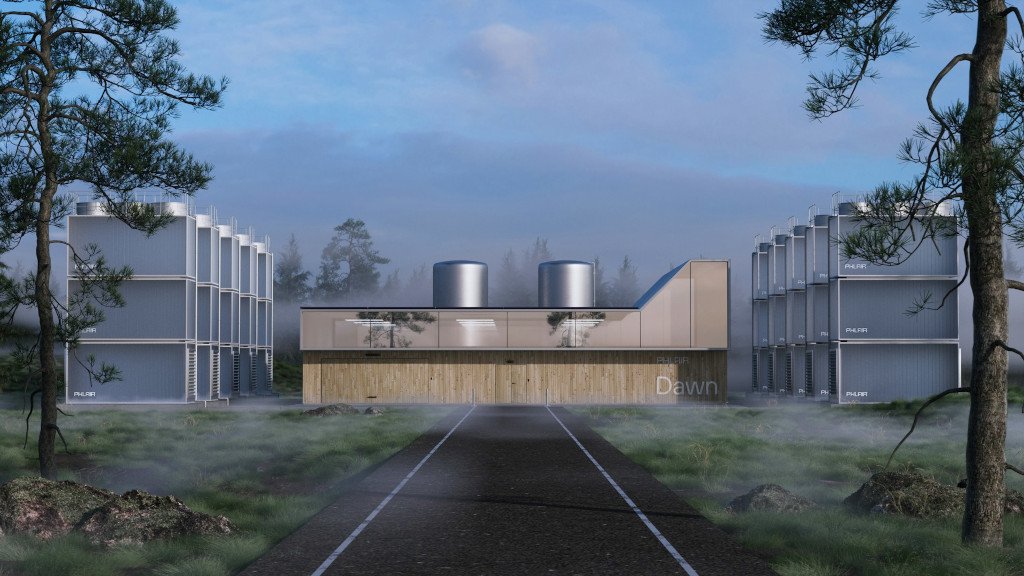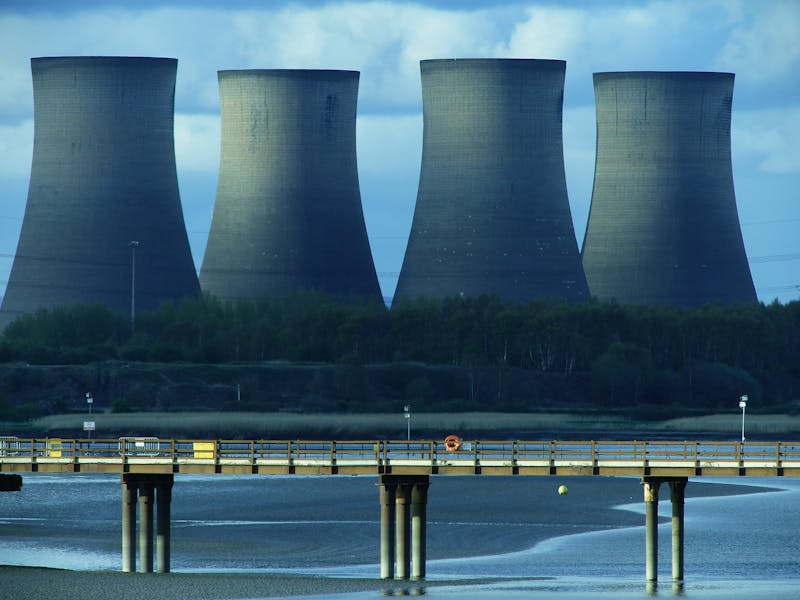Carbon capture companies develop and operate climate technologies designed to trap carbon dioxide (CO₂) emissions before they enter the atmosphere. Their work involves capturing CO₂ directly from industrial processes—such as cement, steel, or power plants—or even from the air itself through direct air capture (DAC) systems. Once captured, the carbon can either be stored underground in geological formations (a process known as carbon capture and storage, or CCS) or repurposed into useful products like fuels, building materials, or synthetic chemicals (carbon capture and utilization, or CCU).
All that sounds pretty simple, but the work behind it is a deep mix of chemistry, heavy industry, regional politics, and a little bit of optimism. It’s worth noting from the get-go, carbon capture is not a silver bullet in dealing with climate change. However, it’s increasingly seen as a critical tool in achieving net-zero emissions, especially in hard-to-abate sectors plagued by technical and economic feasibility challenges.
Below, I break down how carbon capture companies operate, why they exist, how they make money, and what success looks like in plain language.
Why Carbon Capture Exists: Three Hard Truths

Some emissions are stubborn.
Even with rapid progress in clean energy, certain industrial processes will continue to release carbon dioxide for years to come. In sectors like cement, steel, and chemicals, CO₂ isn’t just a byproduct of burning fossil fuels; it’s released through the very reactions that create these essential materials. Electrifying such processes or substituting materials at scale remains technically challenging and expensive. Carbon capture provides a practical way to intercept these unavoidable emissions while longer-term solutions mature.
We need speed and scale.
The transition to renewables, electrification, and reforestation is underway, but time is short. Most climate models that aim to keep global warming below 1.5°C rely on capturing and removing billions of tonnes of CO₂ by mid-century. Carbon capture technologies—whether from industrial sources or directly from the air—offer a scalable bridge solution. They can buy the world valuable time by reducing net emissions now, while broader transformations in energy, infrastructure, and consumption take hold.
Policy and markets set the economics.
Carbon capture’s success depends less on the technology itself and more on the incentives surrounding it. Government tax credits, carbon pricing schemes, and corporate offtake agreements determine whether projects are financially viable. In regions where policies reward permanent storage or low-carbon products, investment accelerates. Strong, predictable policy signals are therefore crucial to move carbon capture from a niche experiment to a mainstream tool in the climate solution set.
The three basic moves: capture, transport, and store or use
- Capture: They separate CO2 from where it’s produced or from ambient air. That can happen at a smokestack in a cement plant, inside a natural gas facility, or in a fan-driven box sitting on a field sucking air in. Capture methods include chemical solvents that bind CO2, physical filters and membranes, and mineralization processes that lock CO2 into solid forms.
- Transport: Once concentrated, CO2 travels via pipeline or truck to where it will be stored or used. Pipelines are the cheapest option at scale but require upfront investment and regulatory approvals.
- Store or Use: The captured CO2 is either injected into deep geological formations for permanent storage or converted into products like building materials, synthetic fuels, or plastics. Some firms focus on permanent storage, others on utilization, and a few try to do both.
Where does the captured carbon end up?
Geological storage.
Most captured carbon dioxide today is stored deep underground in carefully selected geological formations such as saline aquifers, depleted oil and gas reservoirs, or basalt rock layers. When injected under high pressure, CO₂ can remain securely trapped for thousands of years. Companies like CarbonClean, Occidental’s 1PointFive, and Northern Lights (Equinor, Shell, and TotalEnergies) are developing large-scale storage projects that demonstrate the safety and permanence of these sites. This method forms the backbone of most carbon capture and storage (CCS) strategies, offering long-term, verifiable climate impact.
Mineralization.
Some innovators take storage a step further by turning CO₂ into rock. In this process, CO₂ reacts naturally with minerals such as magnesium or calcium in basalt formations, forming stable carbonates that lock carbon away permanently. Firms like Carbfix in Iceland and Heirloom Carbon Technologies in the U.S. are leading this field, proving that mineralization can provide durable, measurable carbon removal with minimal risk of leakage.
Product use.
Captured carbon can also be repurposed into valuable materials and fuels—a concept known as carbon capture and utilization (CCU). Companies such as CarbonCure and LanzaTech transform CO₂ into building aggregates, synthetic fuels, or chemical feedstocks. While this approach can create revenue streams and circular carbon products, the permanence varies. Once these products are used or burned, much of the CO₂ eventually returns to the atmosphere, unless locked into long-lived materials like concrete.
Carbon Capture Business Models
Point-source capture for industrial sites.
This model focuses on capturing carbon dioxide directly from the exhaust streams of factories, power plants, and refineries. Companies install capture systems that trap CO₂ before it escapes into the atmosphere, then compress and purify it for transport via pipelines to underground storage sites, such as depleted oil and gas reservoirs or saline aquifers.
The value proposition is straightforward: industries can continue producing essential materials like steel or cement while cutting their emissions footprint. For many heavy emitters, this approach offers a lower-cost, near-term path to compliance with tightening climate regulations.
Direct air capture (DAC).
Rather than targeting specific facilities, DAC systems remove CO₂ directly from the atmosphere. These machines use fans and chemical sorbents to pull in air and isolate the CO₂, which is then compressed for storage or use in products like synthetic fuels or building materials. Because atmospheric CO₂ is highly dilute—only about 0.04% by volume—DAC is currently more expensive per tonne than point-source capture. However, its flexibility in location and the purity of the captured CO₂ make it valuable for achieving net-negative emissions.
Hybrid and evolving models.
Many carbon capture companies blend both approaches. They begin with industrial capture to generate revenue and operational experience, then expand into DAC as technology costs fall and new financing mechanisms emerge. This hybrid model reflects the industry’s broader trajectory: starting with practical emissions reduction today while building toward scalable atmospheric removal tomorrow.
Real-world scale and the math
A single large industrial facility might emit hundreds of thousands to a few million tonnes of CO2 per year. By contrast, early DAC plants today often remove thousands to tens of thousands of tonnes annually.
To make a noticeable dent in atmospheric CO2, we need both big industrial projects and massive deployment of DAC over time. Cost per tonne varies widely: low for retrofitting certain industrial sites, higher for DAC today. But costs tend to fall as technology matures and deployment scales.
Risks and criticisms
Carbon capture may be one of the most promising tools in the climate toolkit, but it’s also one of the most hotly debated. Critics warn that it can become a lifeline for polluting industries, allowing fossil-fueled plants to keep operating under the guise of progress. The risk of lock-in is real: if capture technology is used simply to prolong outdated infrastructure rather than enable deep decarbonization, it delays the shift toward cleaner energy. The most credible projects are those that treat carbon capture as a bridge, not a crutch—integrated within broader strategies for electrification, renewables, and process innovation.
Another key challenge is ensuring permanence. Captured carbon must stay captured. Underground storage sites can, in theory, hold CO₂ for millennia, but monitoring is essential to confirm that it isn’t leaking back into the atmosphere. Responsible operators now use advanced seismic surveys, pressure tracking, and public reporting to verify storage integrity, turning transparency into a competitive advantage.
Then comes additionality: the guarantee that carbon removal delivers genuine, extra benefit beyond what would have happened otherwise. Without clear accounting standards and open data, a tonne claimed is not necessarily a tonne removed. And all of this depends on energy efficiency—capturing, compressing, and storing CO₂ requires power, so the best projects are run on renewable or low-carbon energy to avoid negating their own climate gains.
Takeaway
Carbon capture companies build the plumbing and chemistry that separate CO2 from emissions or air, move it, and lock it away or repurpose it. Their work blends hard engineering, geology, policy, and markets. The technology is real and increasingly practical. The challenge is deployment at speed and scale while avoiding moral hazards and ensuring permanence. The next decade will show whether carbon capture becomes a reliable partner in global decarbonization or a well-meaning but limited patch.


